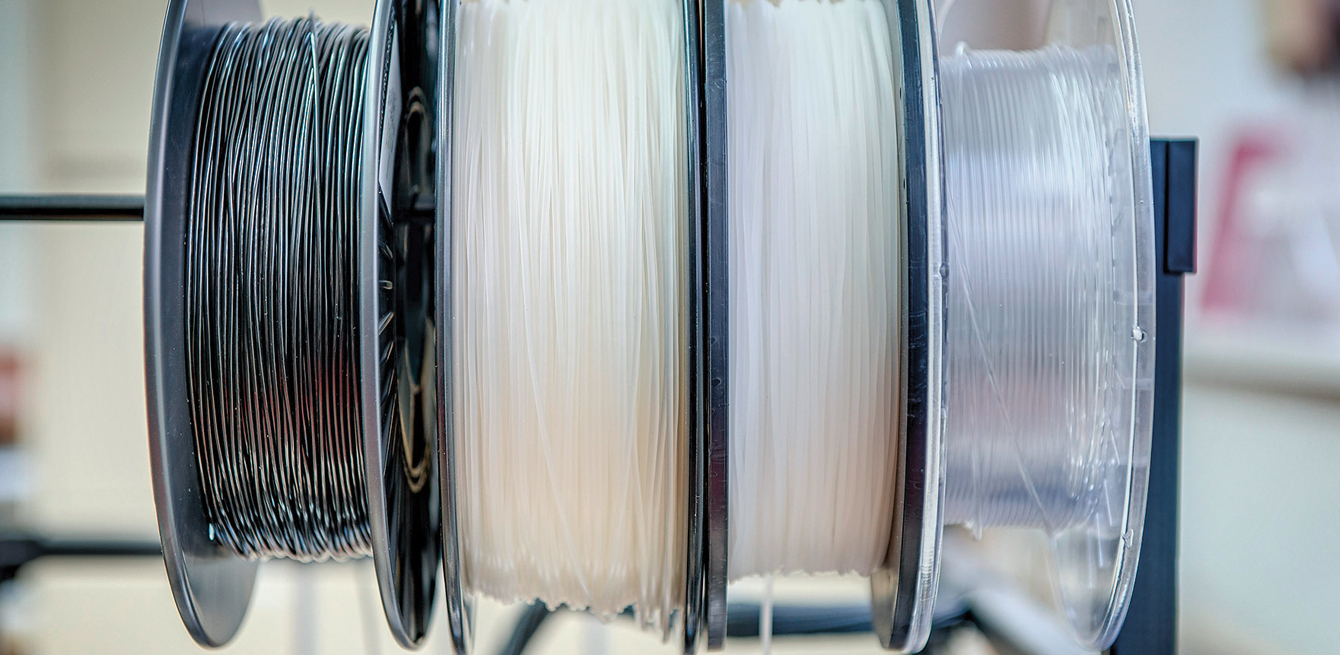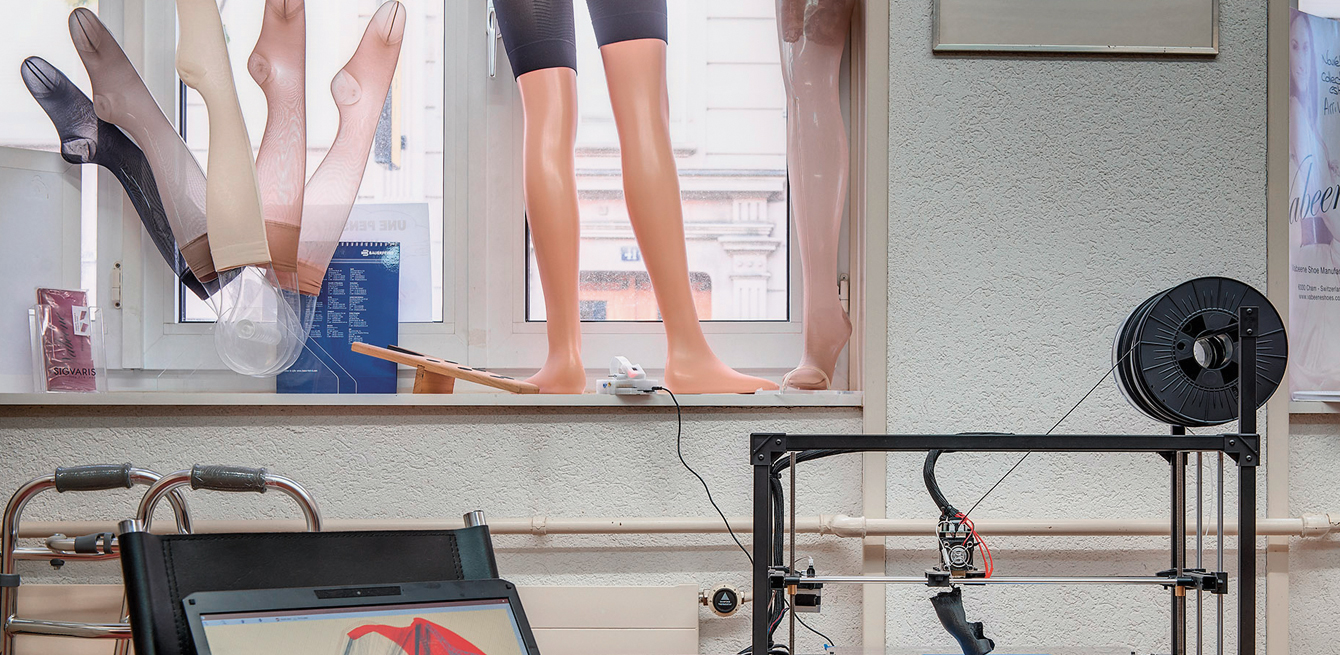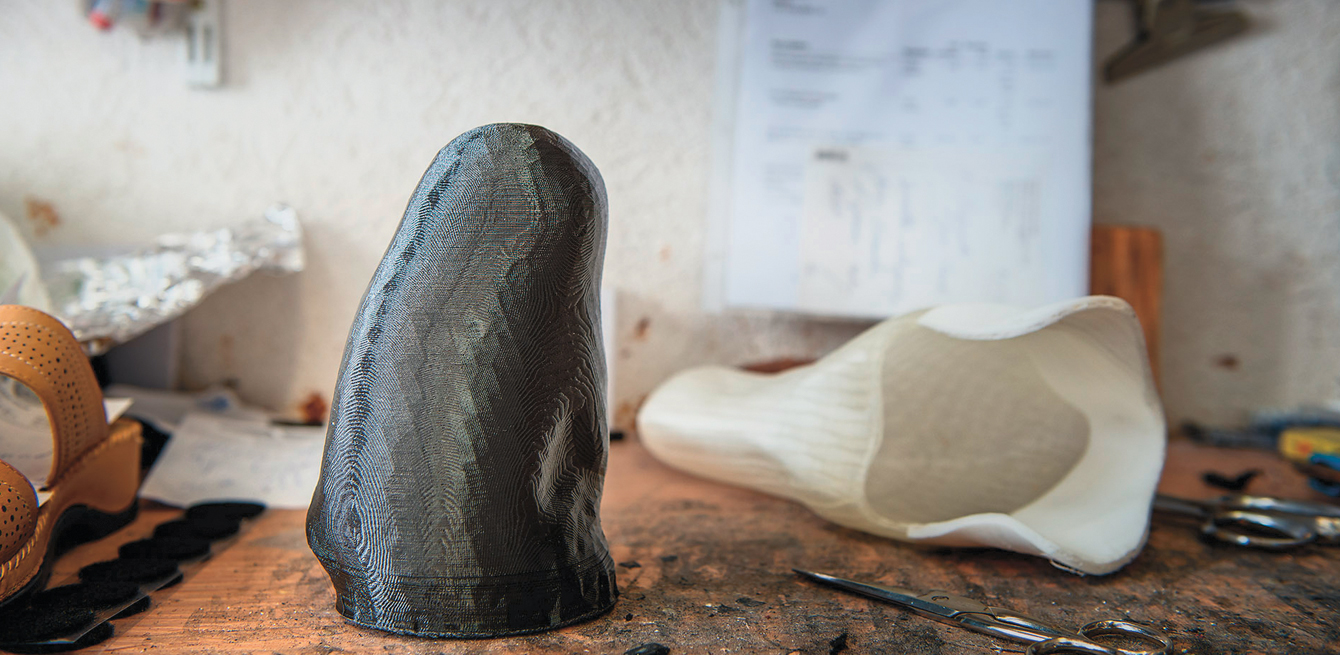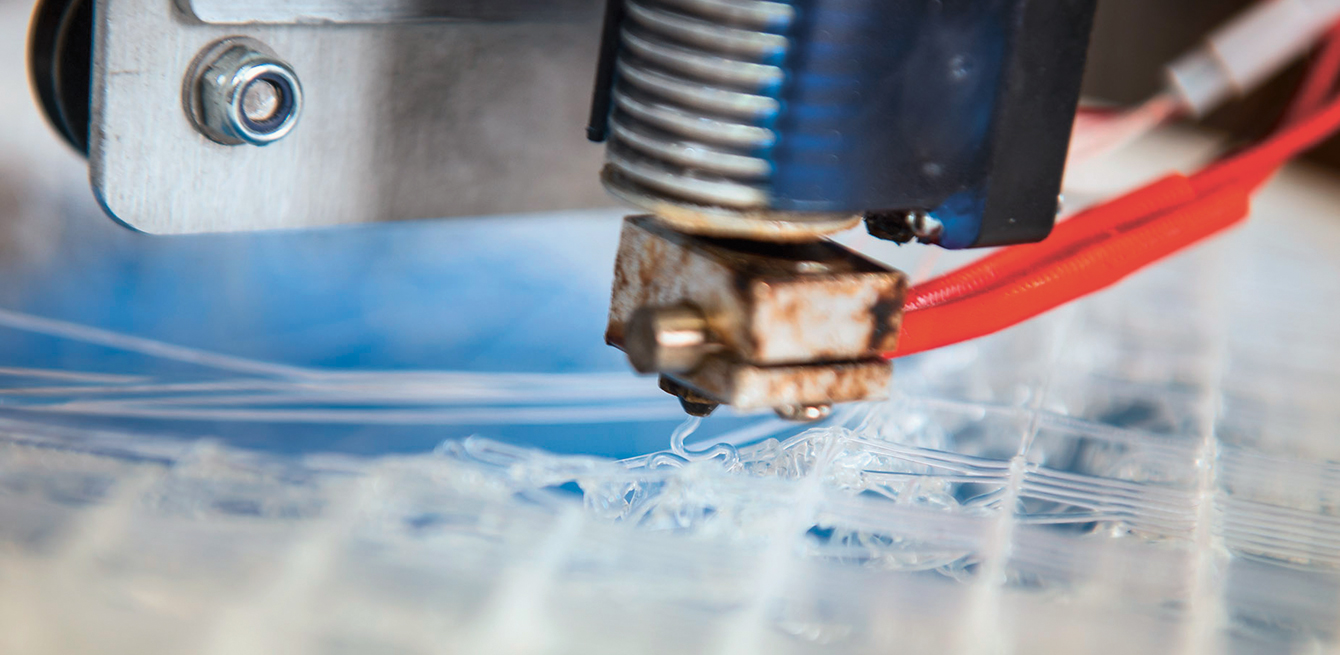
A swiss orthopaedist uses 3d printing to design prosthetics that perfectly fit the patient’s body shape.
Messmer orthopaedics, the small shop near the train station in la Chaux-de-Fonds, looks as though it hasn’t changed for ages. yet they now use the latest 3d printing techniques. Philippe Messmer, the owner and an orthopaedist by training, has been making thumb and foot braces, along with other arm and leg prosthetics, for a year. “3d printing is used for greater precision, but also to duplicate a part, which can’t be done with a mould,” says the technology enthusiast, who used to work with the international committee of the red cross. “These prosthetics are also considerably more comfortable for patients. a plaster cast weighs more than a printed cast.”
Philippe Messmer currently uses the Gigabot and Rigidbot 3d printers. the ingenious orthopaedist bought them online and then modified and adapted them. “with its 60 x 60 x 60 centimetre build volume, gigabot can print large parts but the settings often take a lot of work.
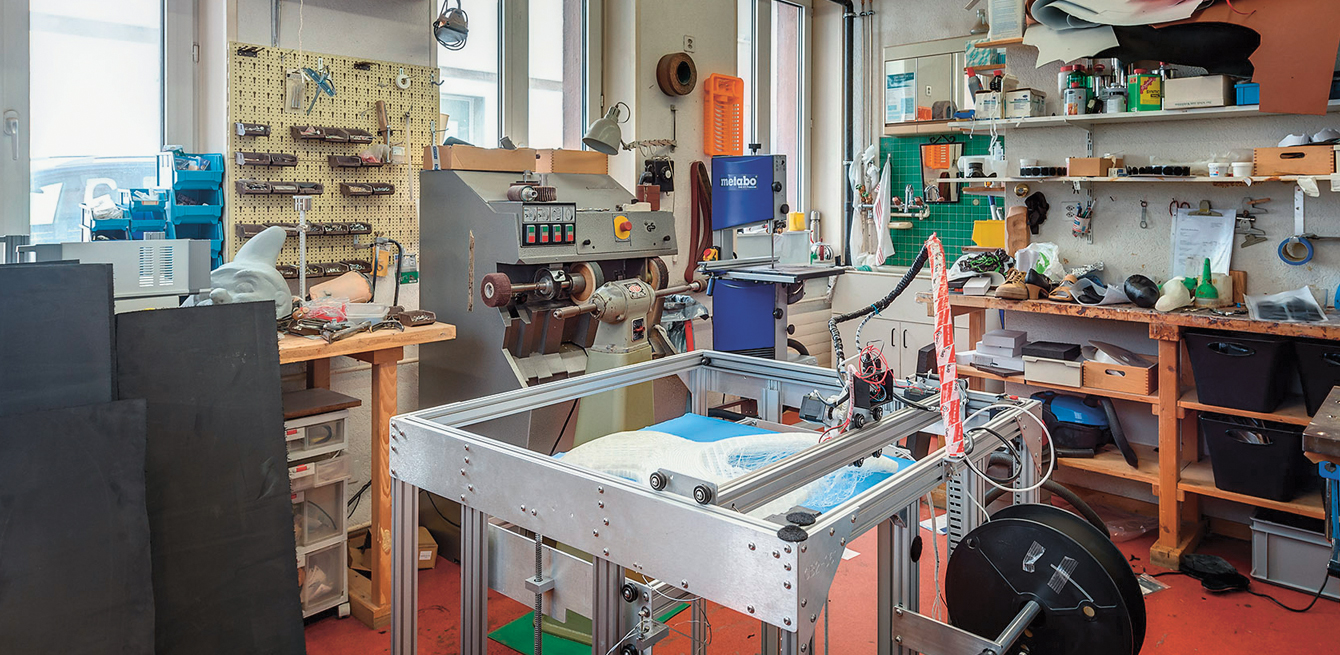
Gigabot and Rigidbot
The first step in the process is to measure the stump or residual limb using a 3d scanner to model a prosthetic or orthotic limb. This simple procedure comes as an immense relief to the parents of young patients. “instead of casting a mould of the child’s limb, which takes hours, measurements only take a few minutes.” This simplified manufacturing process makes it easier to print new prosthetic limbs as the child grows.
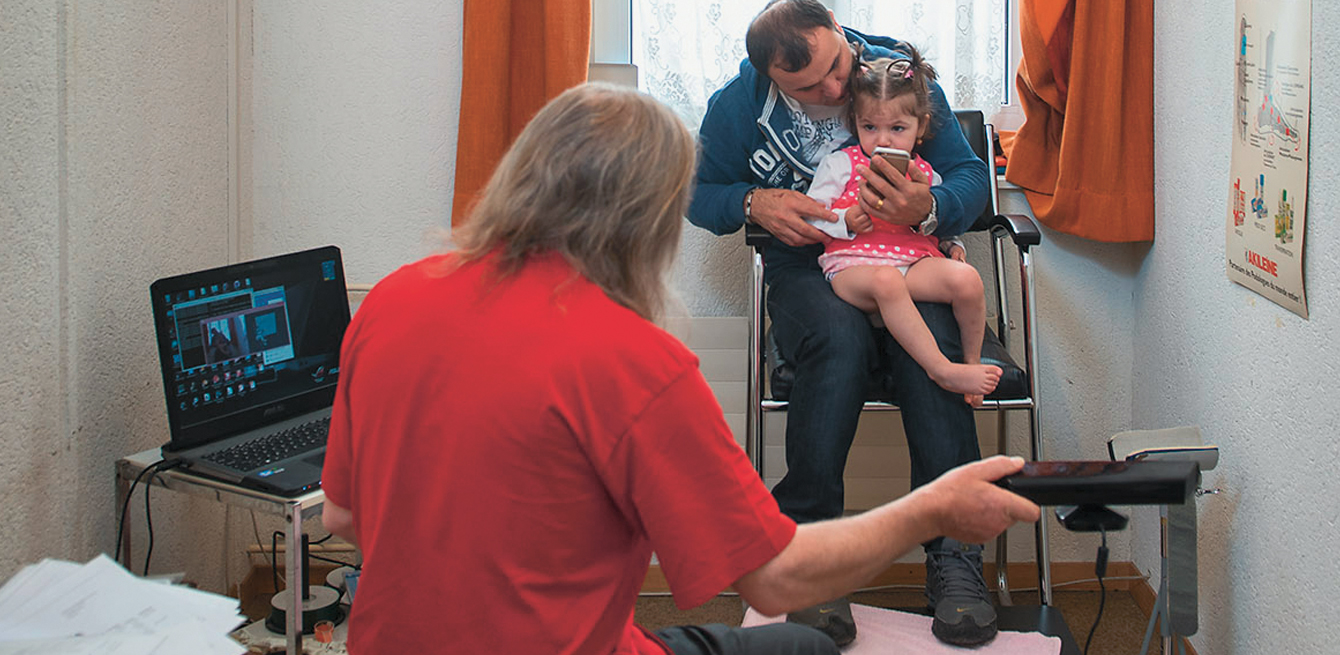
The imprint is then imported into 3d modelling software, which refines the model and analyses movement to make any necessary corrections or adjustments to the prosthesis.
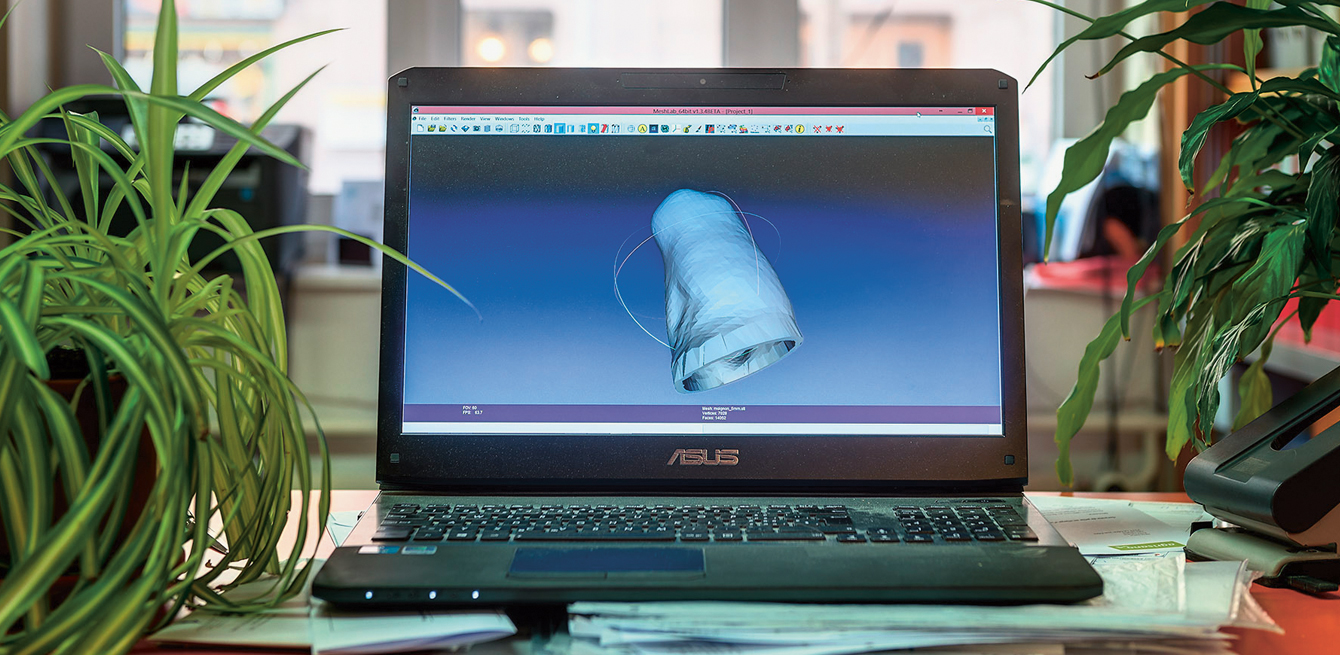
Once the 3d model is finalised, it is time for printing. The process uses nylon, abs or pla polymers and requires a lot of adjustments to the settings, and a lot of patience, to achieve the desired outcome. “It can take nearly five days to print a very thin cast,” says philippe messmer. “The temperature and printing speed also need to be set, and they’re not the same for the surface and inner section.” Once the process is complete, the prosthetic is covered in leather or fabric before being fitted on the patient.
